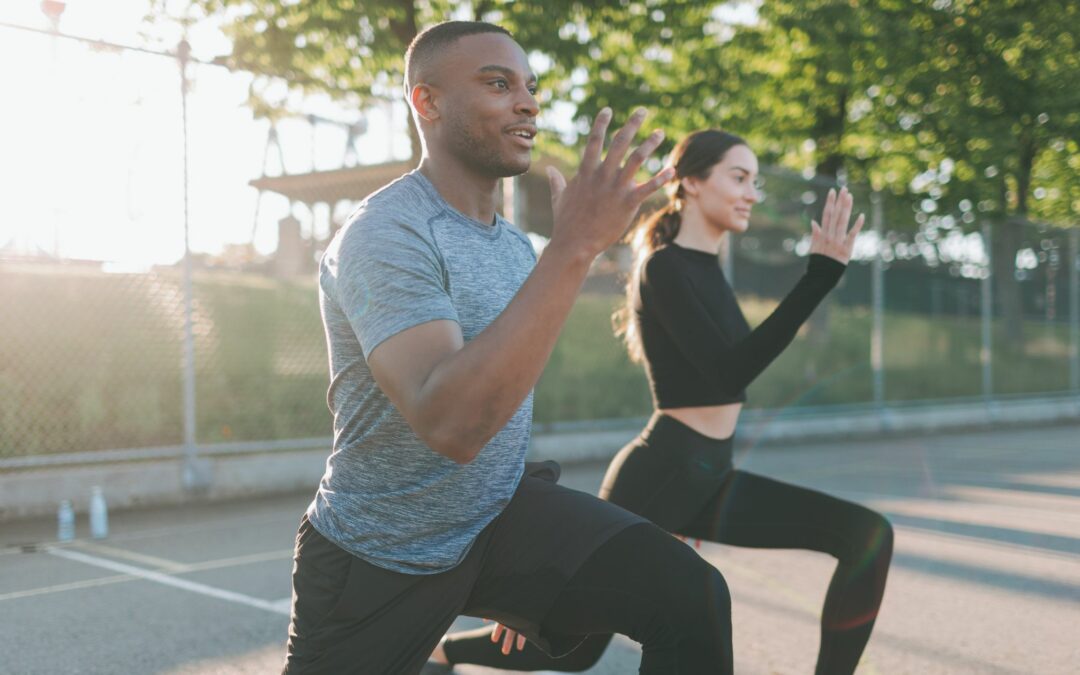Introduction to Couples Yoga with Advantage Physiotherapy
Yoga, a timeless practice combining physical, mental, and spiritual elements, offers immense benefits. While solo yoga nurtures individual tranquillity and flexibility, couples yoga introduces an exciting dimension to this ancient practice. It’s a journey of harmony, enhancing physical skill and fostering deeper bonds of understanding and trust between partners.
At Advantage Physiotherapy, we understand the value of shared experiences in yoga. This comprehensive guide offers a diverse range of poses suitable for all levels, from beginners to advanced practitioners. Dive into these 17 dynamic yoga poses designed for two, and witness how they can transform your relationship and physical well-being.
Exploring the Benefits of Couples Yoga
Before we delve into the poses, let’s appreciate the unique advantages of couples yoga:
Enhanced Communication: Performing poses together requires and reinforces mutual understanding and non-verbal communication.
Deepened Trust: Trust is the cornerstone of couples yoga, as many poses depend on relying on each other for balance and support.
Improved Physical Health: These poses enhance flexibility, strength, and balance, offering a comprehensive physical workout.
Emotional Bonding: Sharing a yoga practice strengthens emotional connections, fostering a more profound sense of intimacy and partnership.
Preparing for Your Yoga Journey
Remember to start with a warm-up, which is crucial for preventing injuries and enhancing the effectiveness of your practice. A brief session of light jogging, star jumps, or simple stretches prepares your muscles for the poses ahead.
Essential Couples Yoga Poses
1. Partner Forward Fold
Benefits: Stretches the hamstrings and improves flexibility.
How to Do It: Sit opposite each other, legs extended, and the soles of your feet touching. Gently hinge forward from the hips, holding each other’s forearms for support.
2. Seated Cat Cow
Benefits: Opens up the chest and improves spinal flexibility.
How to Do It: Sit cross-legged, facing each other. Hold forearms, arch your back and chest outward (cow), then round your back, bringing your chin to chest (cat).
3. Twin Trees
Benefits: Enhances balance and hip flexibility.
How to Do It: Stand side by side, inside legs planted firmly. Lift your outside leg, resting your foot on the inner thigh or calf (not the knee).
4. Partner Chair Pose
Benefits: Strengthens quads and improves posture.
How to Do It: Stand back-to-back, slowly squat into a chair position, using each other for support.
Intermediate and Advanced Poses – Challenges for Deeper Connection
As you delve deeper into couples’ yoga, it’s time to embrace the challenges and rewards of intermediate and advanced poses. These are exercises in physical flexibility and strength, trust, communication, and the deepening of your connection with your partner.
Start with the Double Downward Dog, a pose that builds upon the foundational Downward Dog by adding the partnership dimension. Here, both partners form the pose together, requiring synchronisation and mutual support. This pose enhances communication as you adjust your positions in unison, strengthening your muscles and ability to work together seamlessly.
Next, explore the Buddy Boat pose. This pose takes the traditional Boat pose to a new level, as both partners must balance and support each other. It’s a playful yet challenging posture that demands core strength and coordination. The Buddy Boat is a great way to explore balance and trust, as success in this pose relies on each partner equally.
Moving on to the more advanced Flying Paschi, this pose adds an element of acrobatics to your yoga practice. One partner supports the other in an aerial version of the Paschimottanasana or Seated Forward Bend. This requires immense trust and communication, as the ‘flyer’ must rely on the ‘base’ for support. It’s a thrilling pose that brings a sense of adventure to your practice, enhancing trust and deepening the emotional bond between partners.
Lastly, the Flying Handstand Scorpion, one of the most challenging poses in couples’ yoga, combines the rigour of a handstand with the elegance of the Scorpion pose. This pose is not just about physical prowess but also about the deep connection and understanding between partners. As one partner forms a stable base, the other achieves an inverted scorpion position, symbolising vulnerability and strength in the relationship.
Remember, these advanced poses should be approached with patience and respect for each other’s abilities and boundaries. They are not just exercises in physical agility but are profound tools for building a deeper, more harmonious relationship. As you practice these poses, you’ll find that the strength, flexibility, and balance you develop on the mat will also positively influence your relationship off the mat.
These Articles May Also Interest You:
The Mummy MOT: 5 Benefits of Postnatal Recovery for New Mums
How Physiotherapy Can Improve Bone Health During Menopause
The Role of Physiotherapy in Managing Menopause Symptoms
Embrace the Journey with Advantage Physiotherapy
Couples yoga is more than just a series of poses; it’s a shared path of growth, communication, and deeper understanding. At Advantage Physiotherapy, we’re dedicated to guiding couples on this transformative journey. Whether you’re new to yoga or looking to deepen your practice, our sessions are tailored to meet your needs.
We invite you to experience the joy and connection of couples yoga. Reach out to us to book a group or a 121-yoga session. Embrace this opportunity to enhance your relationship and well-being together under the expert guidance of Advantage Physiotherapy.
